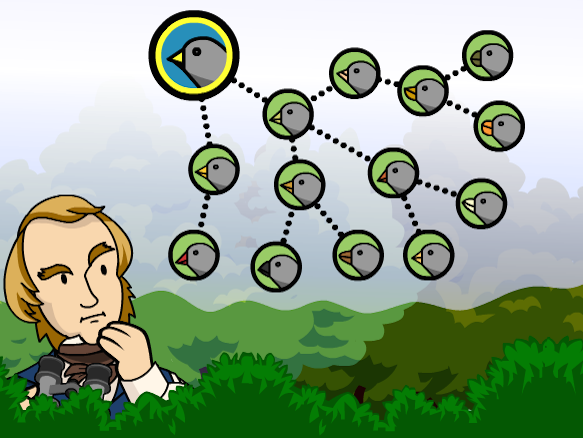Blog
What Is the Theory of Natural Selection And How Does It Occur?

Charles Darwin first proposed the theory of natural selection in the mid-19th century. According to this theory, natural selection is the process by which specific characteristics or traits become more or less prevalent in a population due to differences in reproduction over time. Some physical, behavioral, or physiological characteristics may well give some individuals a lead in surviving and replicating over the rest in the same environment. Typically, these advantages may assist the individual in obtaining required resources, attracting desirable mates, avoiding predators, or competing with others.
VISTA – The Five Steps of Natural Selection
The concept of natural selection is simple and explains how populations of all living things undergo changes over time in their bid to survive and reproduce better. Experts have broken down the process of natural selection into five fundamental steps; Variation, Inheritance, Selection, Time and Adaptation, or VISTA. A brief outline of each step:
Variation and Inheritance:
Naturally, the members of any species will not be identical, externally or internally. Typically, they will vary in size, color, resistance to disease, and several other characteristics. These variations are usually due to random mutations or in simple terms, “copying mistakes” that typically arise during the development process of new organisms involving cell division as Humans Evolve.
Organisms transfer their DNA when reproducing to the next generation. It is well established that DNA contains the code for many traits, and due to this, the offspring often inherit the characteristics belonging to their parents. For example, the children of short parents are likely to be short too.
Selection:
One can appreciate that due to physical limitations, no environment can support populations beyond a particular size. Typically, more organisms take birth than can survive to ensure the successful existence and continued growth of a population. The ones that survive are generally due to their better abilities to find food, choose better mates, and avoid predators better. According to the American Museum of Natural History, these qualities give them a better chance to survive, flourish, reproduce, and pass on their genetic characteristics contained in the DNA. For example, brighter plumage improves the chances of a peacock being able to find a mate, while the ability to dive into the water allows a kingfisher to catch its prey.
Time and Adaptation:
While advantageous characteristics or traits give some individuals a better opportunity to survive and reproduce better, the process of natural selection ensures gifted individuals can pass their traits to their offspring in increasing numbers down the generations. Ultimately, these traits become commonplace in a population depending on the environment and other factors, resulting in better adaptation to the environment than before.
Conclusion
One may be forgiven for assuming the theory of natural selection is the same as the concept of survival of the fittest. However, evolution is more random, and the individual adapting the best may not survive the longest. The natural selection process focuses more on genetic mutations that increase the chances of an individual’s survival. It works through the mechanism of reproduction passing on advantageous traits to the next generation.
-
Blog1 year ago
MyCSULB: Login to CSULB Student and Employee Portal – MyCSULB 2023
-
Android App3 years ago
Cqatest App What is It
-
Android1 year ago
What Is content://com.android.browser.home/ All About in 2023? Set Up content com android browser home
-
Software2 years ago
A Guide For Better Cybersecurity & Data Protection For Your Devices
-
Latest News2 years ago
Soap2day Similar Sites And Alternatives To Watch Free Movies
-
Android2 years ago
What is OMACP And How To Remove It? Easy Guide OMACP 2022
-
Android3 years ago
What is org.codeaurora.snapcam?
-
Business2 years ago
Know Your Business (KYB) Process – Critical Component For Partnerships





















